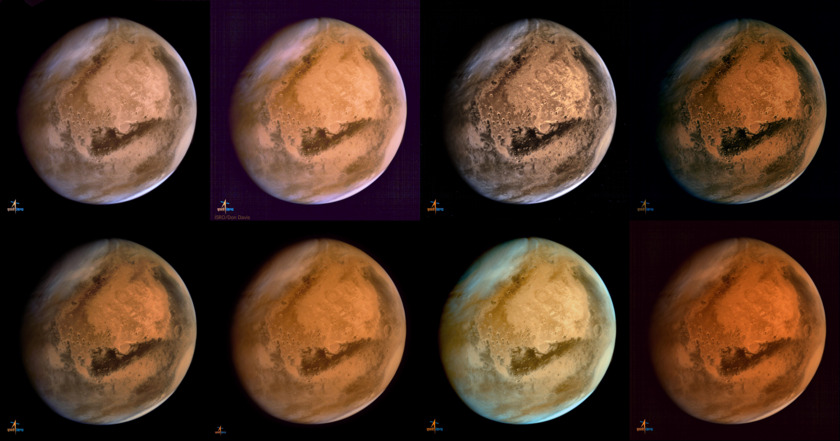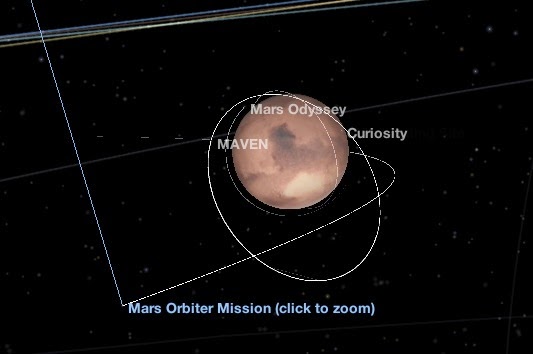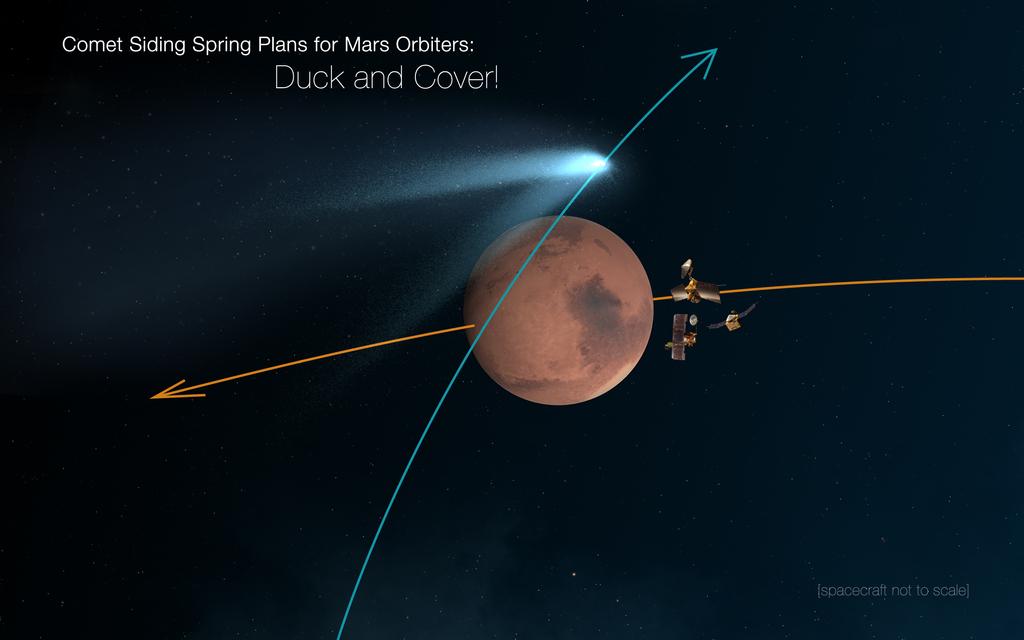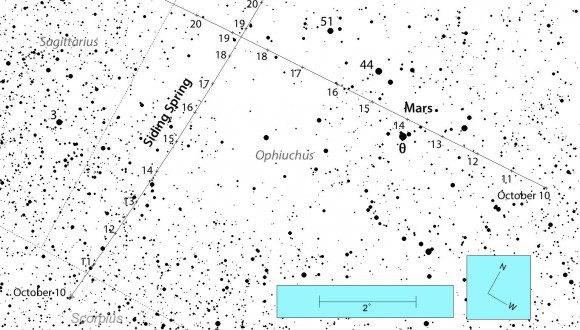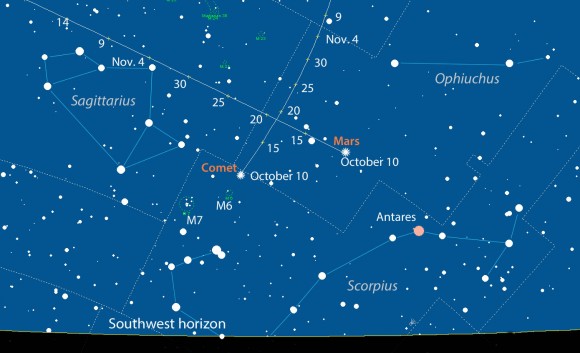Re: Mangalyaan : ISRO's Mars Orbiter Mission
Posted: 10 Oct 2014 02:44
posting in full:
Giant Leap
http://www.frontline.in/science-and-tec ... epage=true
ISRO’s first interplanetary mission has proved its capability in building systems that can endure long journeys in hostile environment and its expertise in deep-space communication. By R. RAMACHANDRAN
THE precise and flawless manoeuvre with which the Indian Space Research Organisation’s (ISRO) Mars orbiter was eased into its designated orbit around the red planet has surprised even ISRO scientists. This is evidence of the meticulous preparation, checking, extensive simulations and ground-testing of all the on-board systems including the main thruster engine 440-Newton Liquid Apogee Motor (LAM), and the accuracy of the command algorithms and the associated software that has gone in to give the satellite complete on-board autonomy of operations in this crucial phase.
The achievement is even more remarkable because, notwithstanding its modest mission objectives and corresponding relatively small-sized spacecraft, such a complex mission was put together in just 18 months. The mission objectives required the development of 22 new software modules, modification of 42 modules and usage of 19 existing modules, a process that began only in November 2012 after the project was sanctioned in July.
This total autonomy was essential to the mission given the Earth-Mars distance of about 224 million kilometres at the time of Mars capture to a maximum of 375 million km after six months. This means there would be a communication delay of 25 to 42 minutes given the time that an electromagnetic signal will take for its round trip. So any real-time intervention would be impossible. Further, the geometry of Mars, the earth and the satellite during Mars Orbit Insertion (MOI) was such that the manoeuvre would have to be performed when there was an occultation of the satellite by the planet when the satellite would be out of visibility for ground systems and there would be a total communication blackout.
Complete autonomy means that all the commands that are uploaded into the on-board computer are time-tagged and are sitting in the spacecraft’s command processor, and any major problem in the ground-to-satellite link will not affect the firing, pointed out K. Radhakrishnan, Chairman, ISRO. Spacecraft autonomy is also essential during the lifetime of the satellite because, as the satellite goes round in its Martian orbit, eclipses, whiteouts and blackouts will recur. “We essentially had a suitcase model of the satellite system on the ground and whatever operations are to be carried out in space have been performed and tested on the ground. The ground tests involved as many as 120 parameters,” Radhakrishnan said a week before the MOI firing, on September 24.
The final Martian orbit achieved by the MOI manoeuvre on September 24 has a 427-km periapsis (shortest distance from Mars) and a 76,993.6 km apoapsis (the farthest distance) as against the planned 423 km × 80,000 km orbit. “This is, in fact, a better orbit than what we had aimed for, because a smaller apoapsis orbit is more stable,” pointed out Koteswara Rao, ISRO’s Scientific Secretary. “But these orbit parameters are based on measurements on points on only a part of the orbit. We will have the exact parameters after it completes one full orbit,” he cautioned.
But, more significantly, the burn duration of the main thruster LAM during the MOI was reduced from the 24.14 minutes planned earlier to 23.15 seconds following the successful test of LAM firing on September 22 after the spacecraft had entered the sphere of influence (SOI) of Mars’ gravity. This test-firing, which was for a very short duration of four seconds, consuming only about 0.5 kilograms of the fuel, not only obviated the need for Plan B (which would have involved firing only the eight 22-N smaller thrusters for a longer duration) but also reduced the actual firing duration required for the MOI.
The final burn duration was only 23.08 seconds, a difference of nearly a minute from the planned duration. This duration is actually determined by the on-board accelerometer itself, which shuts off the engine automatically once the required change in velocity—actually a braking velocity to slow down the spacecraft to enable its capture into the Martian orbit—is realised. As against the targeted 1,098.7 m/s, the operation achieved a velocity change of 1,099 m/s. That is indeed an amazing precision. A difference of one minute in the burn time also means a significant gain in terms of the on-board fuel saved.
Before the MOI, the quantity of effectively available on-board fuel was 281 kg, of which about 250 kg was expected to be consumed during the LAM firing. But that difference of one minute has meant a fuel saving of about 10 kg and this can, in principle, increase the spacecraft life beyond the targeted six months. “We achieved a completely unexpected efficiency of 99.6 per cent in the LAM performance during the test firing,” Radhakrishnan said. “Normally, one does expect a performance degradation of about 2 per cent when you restart after leaving it idle for as long a duration as 300 days. Even our simulations had indicated that. But to our surprise, we got such high efficiency that we decided to reduce the burn time during the MOI,” he said. And even the final firing seems to have gone off with equal efficiency.
The idea of the September 22 test firing itself was quite innovative. It was actually a two-in-one operation: one to carry out a trajectory correction manoeuvre (TCM) of bringing the altitude of the final orbit down to the designated value of around 500 km from the 720-odd km that the spacecraft would have achieved if this firing had not succeeded and the spacecraft had gone along in its trajectory; two, to test the performance of the main engine for the crucial D-day operation. This TCM, which was otherwise scheduled to be carried out on September 14, was not done with this two-birds-with-one-stone operation in mind. You could argue that that there was a risk of not getting the correct altitude if the LAM had failed in the test. But, if the LAM had failed, in any case an optimum orbit with thrusters alone would not have been possible. So why not this? So went the scientists’ logic and it was indeed remarkable thinking. As Radhakrishnan pointed out, the most crucial firing for the orbiter was the Trans-Mars Injection (TMI) manoeuvre. At TMI, the route taken, with four TCMs using the small thrusters, was projected to take the spacecraft to about 500± (50-60) km away from Mars (the periapsis). The four TCMs that ISRO had originally planned were: TCM-1, which was performed on December 11, 2013; TCM-2 scheduled for April; TCM-3 for August and TCM-4 for September.
But ISRO did not have to do the TCM-2 in April because it was felt that the spacecraft trajectory was steady and did not need any correction at that time. TCM-2 was subsequently done on June 11. TCM-2 was also important from another perspective. Except for the engine itself, this manoeuvre had all other aspects involved in the MOI manoeuvre: reorienting the spacecraft, loss of telemetry, and so on. The question then was whether TCM-3 in August was required. It was found that there was no need for it because, without TCM-3, the trajectory was going to be about only 720 km away from Mars. Finally, TCM-4 was reconfigured to be a twin operation with the LAM itself instead of the thrusters. The success of TCM-2 already had given confidence to ISRO scientists that the MOI could be performed without any problem if LAM worked. And the modified TCM-4 proved that LAM will work more efficiently than they had imagined.
Providing a parallel circuit of flow lines for the propellants, a feature not used in other inter-planetary spacecraft—which may have been the reason for the high rate of failures in such missions—was really an innovative solution to a potentially serious problem. The ground test of the D-day firing with the propulsion parameters on D-day—the tank ullage volume, the pressure, the temperature, and so on—and with a new set of flow lines but with the main engine that had gone through some firings, had been conducted successfully for nearly 2,000 seconds, which was more than the targeted duration of about 1,500 seconds for actual firing. This test, which was done only in August, had also indicated that the engine should work after being idle for 10 months, giving the scientists added confidence in its success.
One of the important elements in propellant flow is the pressure in the fuel and oxidiser tanks. Basically, the pressure in the tanks should last the entire operation, MOI and the additional minor on-orbit corrections to the satellite later during its lifetime.
The pressure should not fall below a critical value of 11-12 bar. [One bar is about one atmospheric pressure.] There is a pressurisation system—including the pressurant tank (helium under very high pressure) and the two pressure regulators—sitting above the engine to regulate the pressure in the propellant tanks, which normally come into the pictures only if the pressure falls below 11 bar. But an unexpected leak in one of the pressure regulators required the pressurisation system to be completely isolated from the engine. This was a well-thought-out decision because the ground tests for full 2,000 seconds had shown that the engine performed well with the pressure (of about 16.5 bar) available in the tanks as measured before the test firing without requiring to bring the pressurisation system into play. Both the test burn and the MOI burn firing were therefore performed in the so-called “blow down” mode (in which the pressure is allowed to drop naturally as the engine consumes the propellant). The final pressure as measured after the MOI firing was 11.5 bar in the fuel tank and 12 bar in the oxidiser rank, which, according to Koteswara Rao, are more than optimum for the minor on-orbit corrections that will be required during the mission lifetime of six months.
Camera switched on
Only the on-board colour camera has been switched on now after MOM entered the Martian orbit. According to Radhakrishnan, these pictures have been compared with archived pictures taken from lower altitudes by the Mariner and Viking missions of NASA. “They compare well,” he said. The other instruments will be calibrated and checked over the next one week to 10 days one by one, according to Koteswara Rao. Science will begin after that with appropriate instruments being switched on when required, depending upon the altitude, illumination condition, and so on. “Our scientists are right now discussing what should be the schedule of operations for observing the comet Siding Spring on October 19,” said Radhakrishnan.
The success of the mission so far has proved beyond doubt ISRO’s capability in building reliable systems that can endure journeys of over hundreds of millions of kilometres in hostile space environment and its deep-space communication and navigation capabilities on inter-planetary scales. Innovation and ingenuity in the conceptualisation and designing of the on-board systems have also contributed greatly to the success. And to have been able to achieve this in its maiden attempt when other, more experienced, space-faring nations failed is indeed commendable. With this achievement, ISRO will command more respect in the world of space technology and industry.
Embracing Mars
India celebrates the success of its maiden Mars mission. By T.S. SUBRAMANIAN
http://www.frontline.in/science-and-tec ... epage=true
A WAVE of excitement swept through the Mission Operations Complexes (MOX)-2 and MOX-1 at Peenya in Bangalore at 8 a.m. on September 24. S. Arunan, Project Director, Mars Orbiter Mission (MOM), Indian Space Research Organisation (ISRO), greeted his cheering colleagues with raised hands. Jubilant engineers and scientists flashed the V-sign and shook hands with one another.
Soon India exploded into celebration. Excited schoolchildren visiting the regional science centre and planetarium in Kozhikode, Kerala, celebrated the success with sweets. At the Indian Institute of Science, Bangalore, students formed themselves into ISRO’s logo. In Chennai, schoolchildren held aloft a poster that read: “MAR(VELLOU)S, Salute Our Scientists.” In New Delhi, the Indian staff of the United States Consulate proudly displayed a banner, “Congratulations, India.”
When ISRO Chairman K. Radhakrishnan received a call on his intercom in MOX-2 from V. Kesava Raju, Mission Director, MOM, at 8 a.m. that the huge antennas (with a diameter of 70 metres) in Canberra, Australia, and the Goldstone Deep Space Communication Complex, U.S., had received telemetry signals from India’s spacecraft to Mars, he calmly walked up to Prime Minister Narendra Modi to tell him about the success of India’s MOM. Modi greeted the ISRO Chairman with a hug. India had reached Mars. ISRO’s orbiter to Mars, after traversing 65 crore kilometres of “speedometer” or “road” distance through space from November 5, 2013, was successfully contained in an orbit around Mars at 7-41 a.m. on September 24. Radhakrishnan said: “We have done our best. India is great.”
“We are living our dream,” said Arunan, who attributed the success to the “dedication, focussed approach and meticulous planning” of the MOM team. Kesava Raju called it “a really great achievement for our country”. He said: “We took meticulous care at every stage of the spacecraft’s conceptualisation and configuration, the design of its equipment and subsystems and their realisation. Besides, there was teamwork and meticulous planning in building the spacecraft.”
Suspense was building up at MOX-2, the nerve centre of MOM operations, and MOX-1, from 3 a.m. on September 24. ISRO engineers sat in front of their computer consoles while big screens in front of them flashed the latest update on MOM. Three hours prior to T, the spacecraft started using its medium-gain antenna for communication with the earth. Then, the spacecraft’s forward rotation began. The manoeuvre was to reorient the Liquid Apogee Motor (LAM), also called 440 Newton engine, on the spacecraft. On the dot (that is, T), at 7-17 a.m., as the spacecraft neared Mars, the LAM and the eight small thrusters started firing simultaneously. The eight thrusters fired to control the spacecraft’s attitude so that it could communicate with the earth.
At 7-21 a.m. began the Mars occult—a phenomenon when the spacecraft goes behind Mars and communication with the spacecraft is lost. Thus, no telemetry information would be available from the spacecraft. At 7-33 a.m., applause broke out when MOX-2 received confirmation from the spacecraft that the LAM and the eight thrusters had started firing together. Their flawless firing lasted about 23 minutes as per the timeline and came to an end around 7-41 a.m. The simultaneous firing led to a reduction in the spacecraft’s velocity by 1.09 km a second and it started orbiting Mars.
India reached Mars in its debut attempt. The Soviet Union failed in its initial attempts in the early 1960s to put a spacecraft around Mars. The U.S.’ Mariner-3 failed in November 1964 to reach Mars. In 1998, Japan sent its Nozomi spacecraft to Mars, but the orbiter failed to make it. In 2003, the European Space Agency put the spacecraft called Mars Express into an orbit around the Red Planet, but its lander, called Beagle-2, crashed. A Chinese payload could not reach Mars in 2011 after the Russian mission called Phobos-Grunt, on which it was riding piggyback, failed. Phobos-Grunt’s main engine did not fire after lift-off.
India made it to Mars by executing with effortless ease the most crucial and complex manoeuvre of the mission, the Mars Orbit Insertion (MOI). The MOI had been the bane of several initial U.S. and Russian missions. What added to India’s success was that the LAM, which was hibernating aboard the spacecraft, ignited into life after a gap of 300 days. ISRO had subjected the LAM to a battery of tests on the ground, simulating deep-space conditions, to ensure that it woke up after its long slumber.
Soon after the MOI, the spacecraft settled in its orbit around Mars, with a periapsis (closest approach to Mars) of 421.7 km and an apoapsis (farthest point from the red planet) of 76,993 km. What was targeted was 423 km × 80,000 km.
The reverse manoeuvre of the spacecraft began at 7-42 a.m. to orient its antenna towards the earth to resume communication. The orbiter’s solar panel was oriented towards the sun to generate power. The Mars occult ended at 7-45 a.m.
Kesava Raju explained why it was necessary to reduce the spacecraft’s velocity by 1.09 km/s to enable the spacecraft’s entry into the Martian orbit. He said: “When we reach Mars, the spacecraft will have a velocity of 22.57 km/s, whereas Mars’ velocity is 25.71 km/s. It means the spacecraft is slower. When the spacecraft is under the influence of Mars’ gravity, it reaches the closest point to Mars. At that time, it will attain a velocity of 5.7 km/s. But we do not require 5.7 km/s for our spacecraft to reach the desired orbit. We require 4.6. So the orbiter’s velocity is reduced from 5.7 km/s to 4.6 km/s. The velocity decrement is 1.1 km/s.”
ISRO’s Plan A required that the LAM and the eight thrusters fire simultaneously. If the LAM failed to ignite, ISRO had a Plan B, in which only the eight thrusters would fire. This would take the orbiter to a different orbit around Mars. The planned orbit offered a vantage view for the five instruments on board India’s orbiter to study the Martian atmosphere, mineralogy, morphology, presence of methane, and so on. The Plan B orbit would not have been a stable one, Kesava Raju said. It would have a periapsis of 20,000 km and an apoapsis of eight lakh to nine lakh kilometres. “These parameters will vary from time to time. They are not stable. Still, they will be able to provide you some scope for observing Mars,” he said. Within a couple of hours of the spacecraft settling in the Martian orbit, ISRO switched on the Mars Colour Camera aboard it to take pictures of the red planet’s surface. The Indian Space Science Data Centre at Byalalu village, about 40 km from Bangalore, received five “frames” of the Mars’ surface taken by the camera.
Outstanding feats
The MOM demonstrated ISRO’s ability to navigate the orbiter through 66 crore km, covering the earthbound phase, its sun-centric phase and then the cruise towards Mars. Indeed, as Prime Minister Modi said, ISRO had taken “a route known to very few”. ISRO excelled in deep-space communication, too, with the orbiter through 300 days of its interplanetary voyage.
“Our ability to communicate over 224 million km of radio distance [that is, 66 crore km of ‘road distance’] was successfully demonstrated in this mission,” Arunan said. When a spacecraft voyages through deep space, it faces many uncertainties, but ISRO developed the capability to predict them. “The accuracy of our prediction comes from our communication system, which has worked to perfection. We were able to communicate about 224 million km of radio distance with our orbiter. Our ability to communicate can go up to 375 million km of radio distance,” Arunan said.
The third remarkable feature of MOM was the spacecraft’s “autonomy”. It would take more than 26 minutes for a radio signal from the ground to reach the orbit and return to the ground station. This made real-time rectification of a case of “misbehaviour” by any system on board the spacecraft impossible. So the spacecraft was vested with its own intelligence to manage crucial operations such as the MOI, detect faults, isolate them and rectify them, and conduct operations during periods when the spacecraft would not be visible from the earth.
“…We have sensors and transmitters on board the orbiter that can sense the failure and reconfigure the redundant system on the spacecraft on their own. The reconfiguration will take place autonomously in the orbiter,” said M. Annnadurai, Programme Director, Indian Remote-Sensing Satellites and Small Satellites Systems, ISRO (Frontline, November 15, 2013).
Kesava Raju said: “In case of unexpected events, the spacecraft has to survive on its own. If the spacecraft’s attitude is not proper, we will not be able to communicate with it from the earth. So the eight thrusters should simultaneously burn with the LAM and orient the spacecraft’s attitude in such a way that we can contact it from the earth. All these manoeuvres should take place on [commands from on] board itself and they should happen automatically at the required time.” In Radhakrishnan’s assessment: “If one were to identify two important elements in the Mars orbiter, it is its autonomy and navigation towards Mars.”
Another feature that stood out in the MOM was ISRO’s ability to restart the LAM after the engine had remained dormant for 300 days. The LAM was last fired on December 1, 2013, to perform a tricky manoeuvre called trans-Mars injection when the orbiter was shot out of its earthbound orbit into its sun-centric phase and then began its 300-day voyage to Mars. On September 22, 2014, there was a brief firing of LAM for four seconds. This was a dress rehearsal for the prolonged simultaneous firing of the LAM and eight thrusters for 24 minutes on September 24, which led to the all-important MOI.
“We left no stone unturned to ensure” that the LAM fired after it remained dormant in space for 300 days, Arunan said. ISRO rocket engineers tested the LAM on the ground, simulating the thermodynamic conditions of its Mars spacecraft. A simultaneous firing of the LAM and eight thrusters was done. The Project Director said: “We conducted this test in operating conditions [of the spacecraft] as envisaged during the MOI manoeuvre. The test was successful. The engine performance was as per prediction…. So there was no concern about the simultaneous firing of the LAM engine and the eight 22 Newton engine.” This simultaneous firing was done at the ISRO Propulsion Complex (IPRC) at Mahendragiri, near Nagercoil, in Tamil Nadu.
In addition, ISRO’s propulsion specialists test-fired a LAM, kept on the ground for 450 days, simulating the same conditions that India’s Mars orbiter was undergoing in space. “We kept the LAM engine in a vacuum chamber for 450 days and when we fired it again, its performance was absolutely as predicted,” Arunan said. This test on the LAM was done just two weeks ahead of the crucial MOI on September 24.
What came to the fore in the MOM was ISRO’s youth power. Deepak Panda, who took part in the simulation of the attitude control done by the eight thrusters and in the development of the electronics needed for the spacecraft’s orbit control, is only 26. The LAM and the eight thrusters boasted a closed loop guidance scheme (CLGS). “If at all any error developed in the attitude control, the CLGS would nullify it,” said Panda. Rishabh Mishra developed the software for display on the big monitors in MOX-1 and 2. The display related to the telemetry data from the spacecraft.
Kamlesh Kumar Sharma, also in his 20s, could not hide his happiness. “I sent the first command to MOM [on November 15, 2013], after it went into its earthbound orbit. I sent the first command during the spacecraft’s trans-Mars insertion on December 1, 2013,” he said. Sharma described himself as “the prime controller during the spacecraft’s MOI” on D-day. “I was also the first to verify the good news that we received” that India’s spacecraft had entered the Martian orbit, he exulted.

